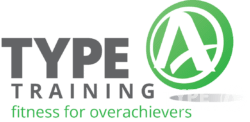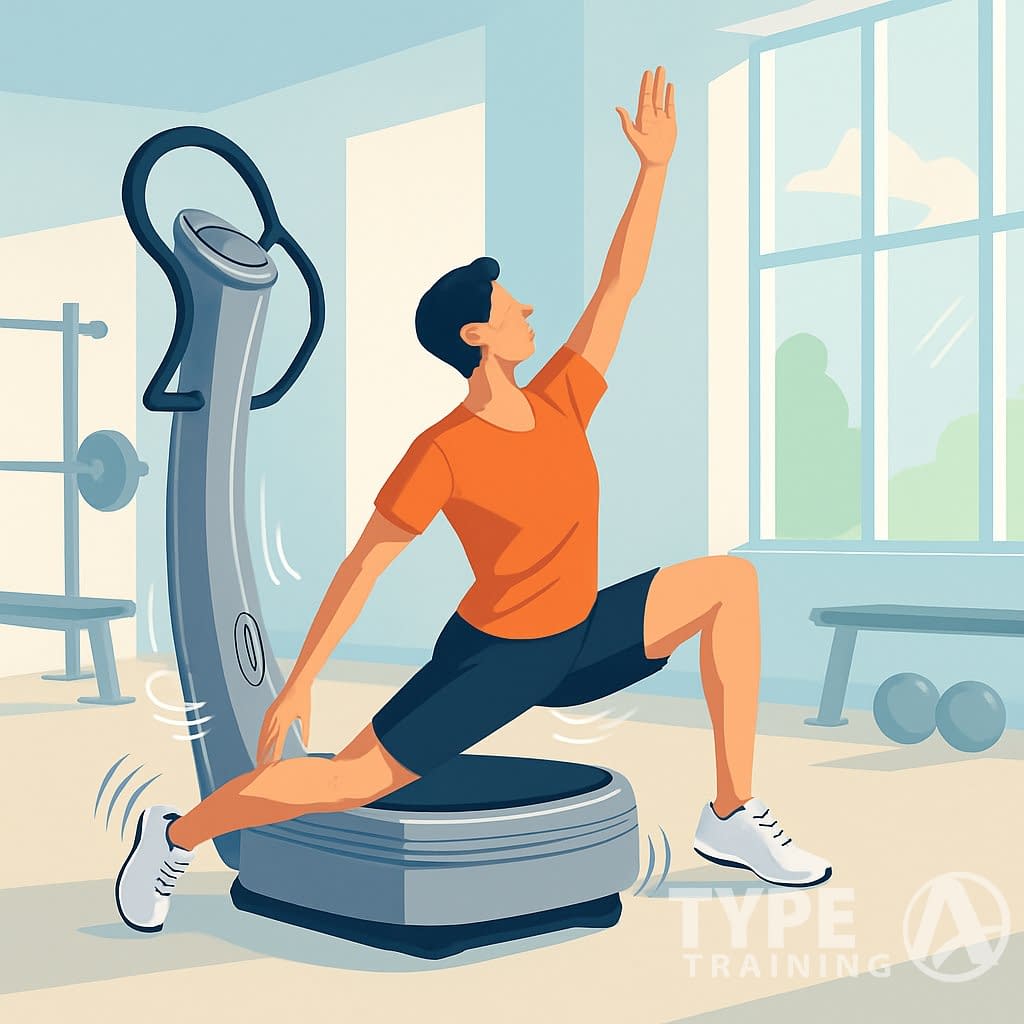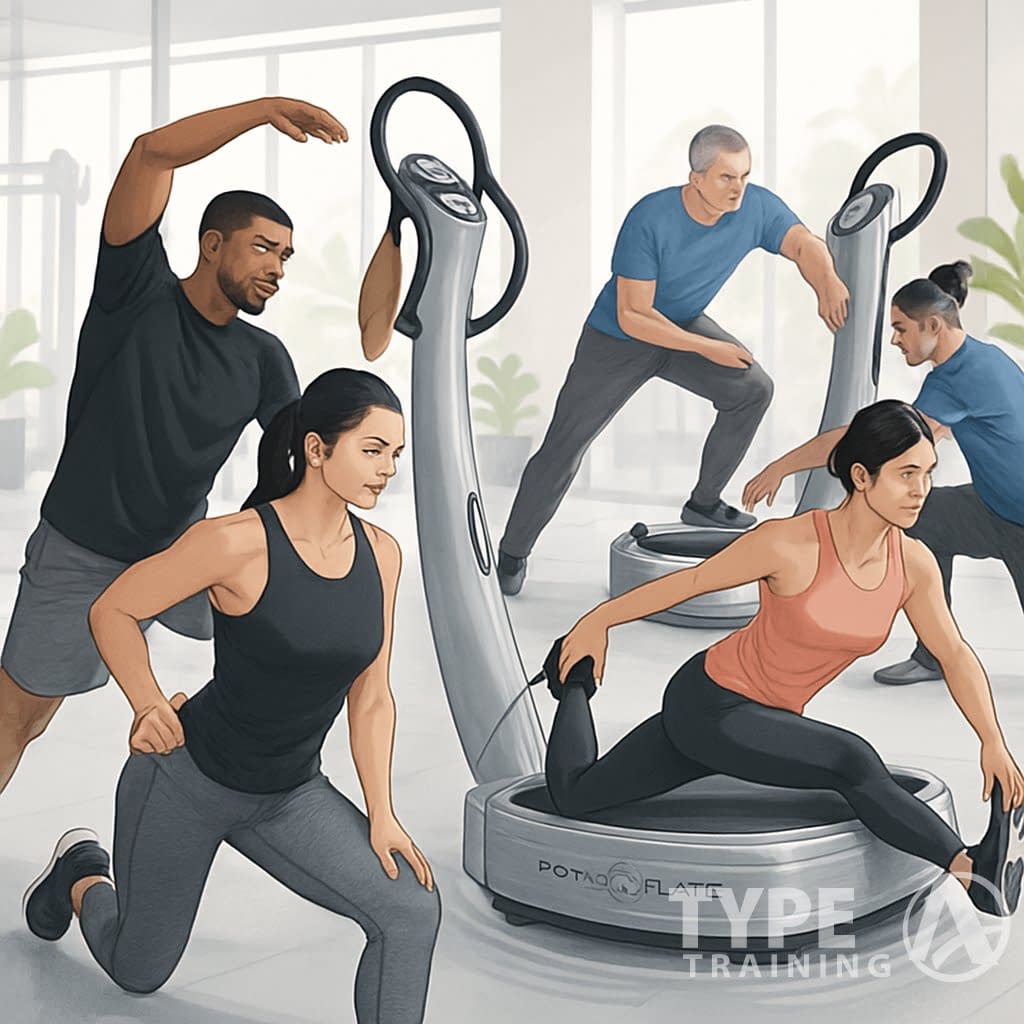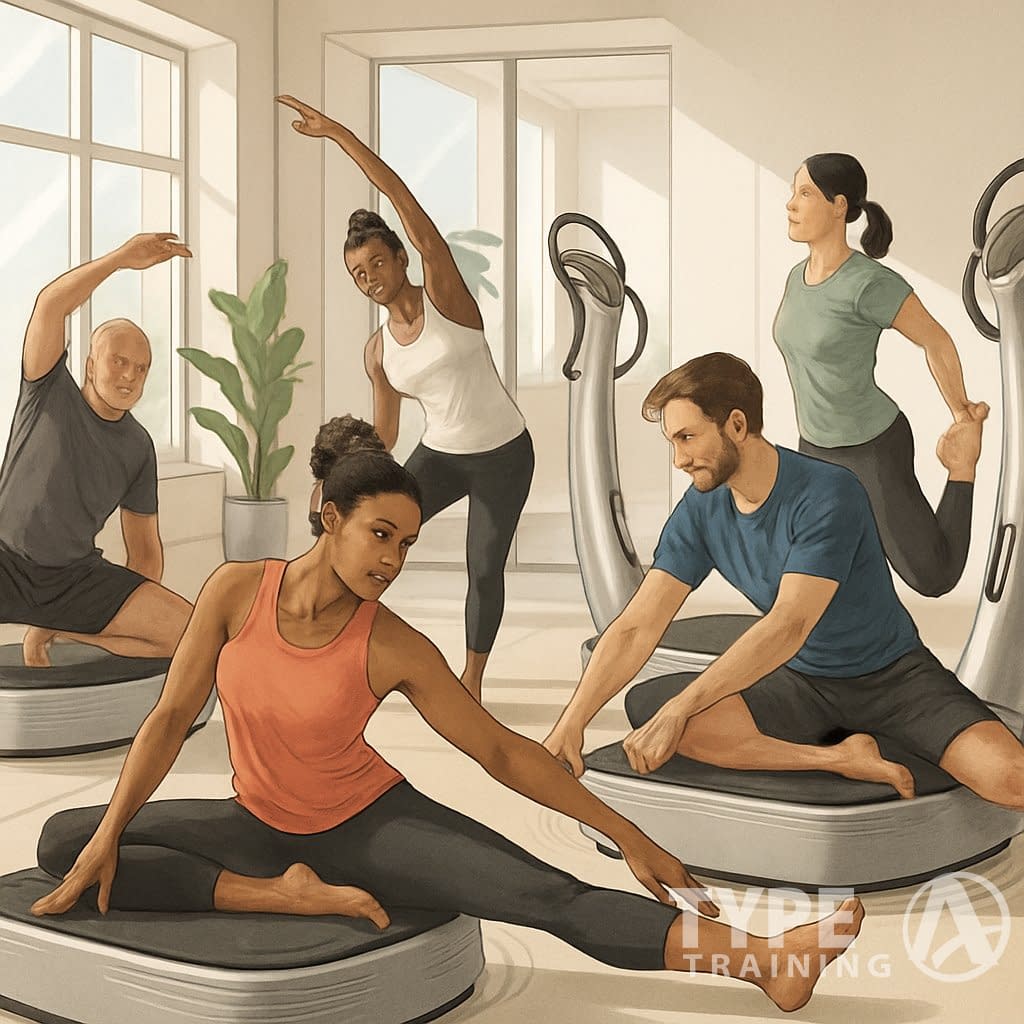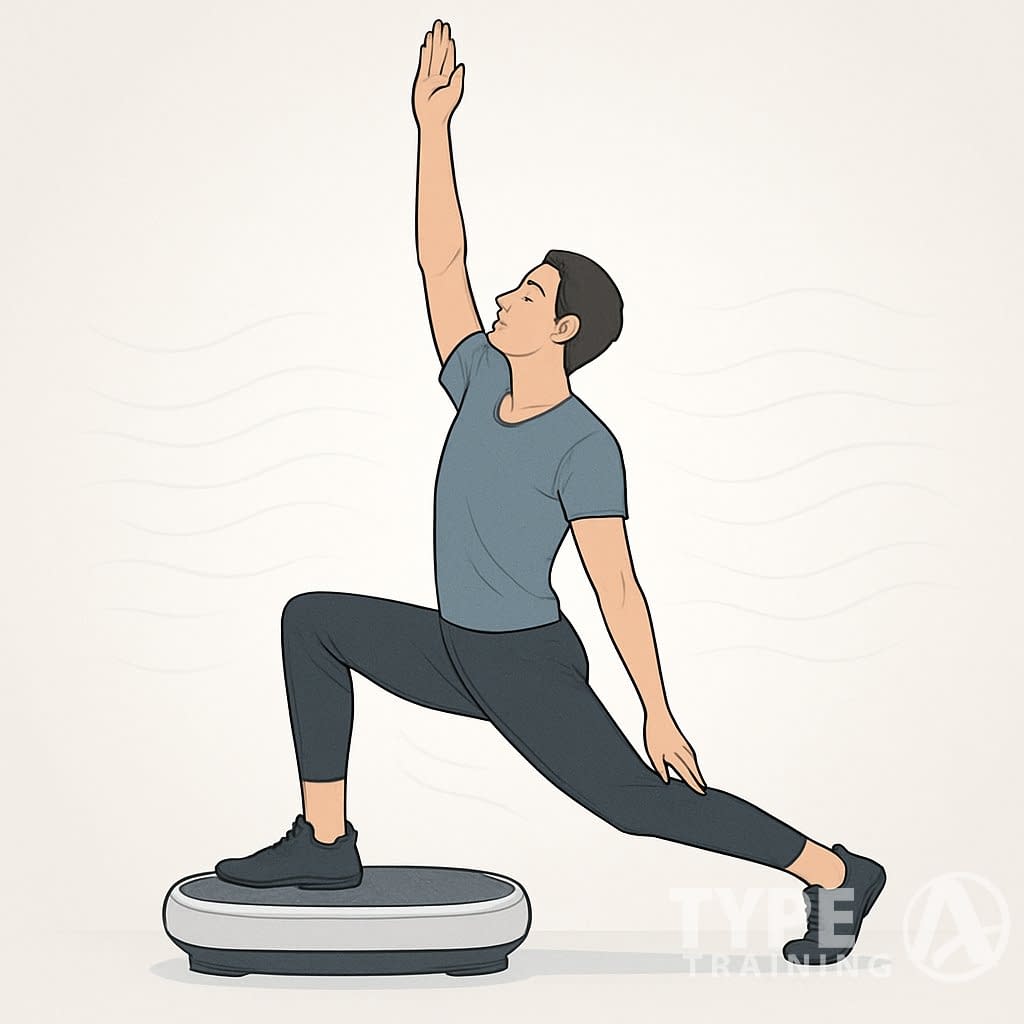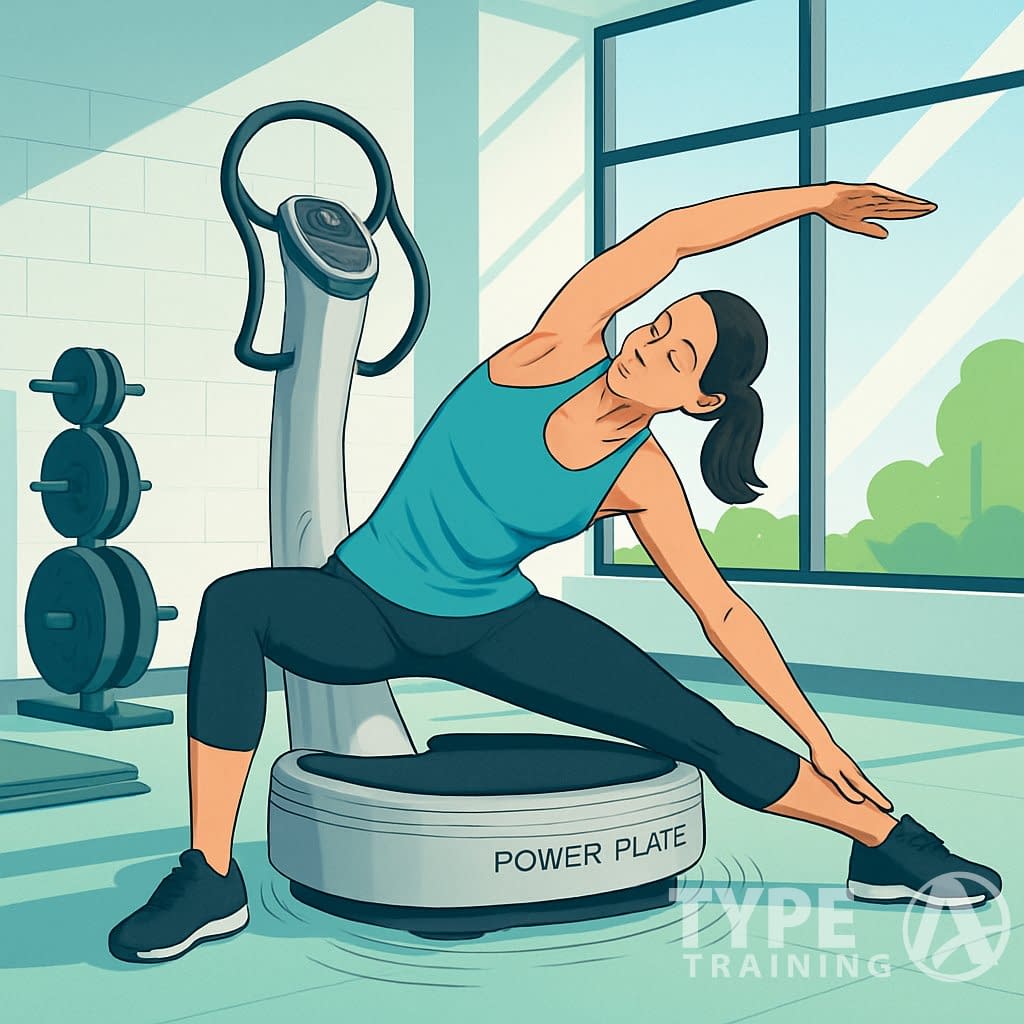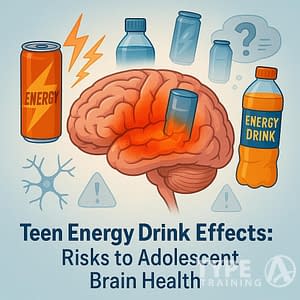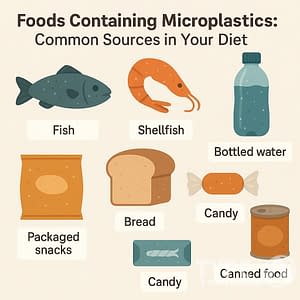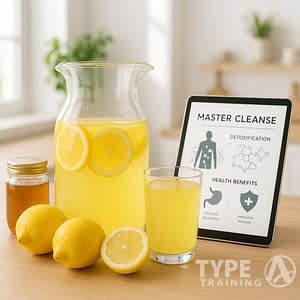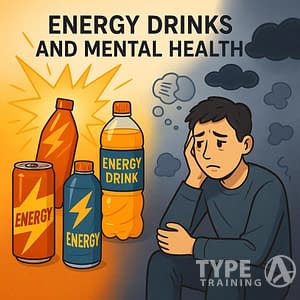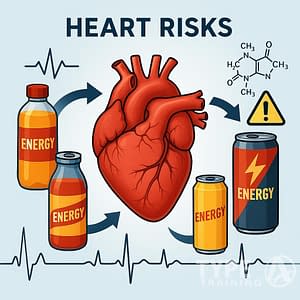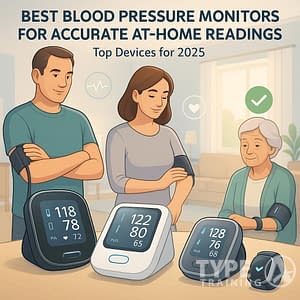If tight muscles keep you from moving freely, stretching on a Power Plate might help you loosen up more effectively. The gentle vibrations stimulate your muscles and boost blood flow, making it easier to release tension.
Incorporating Power Plate Stretching into your routine can significantly enhance your flexibility.
Using vibration training during stretches can help your muscles relax and lengthen more than static stretching alone.
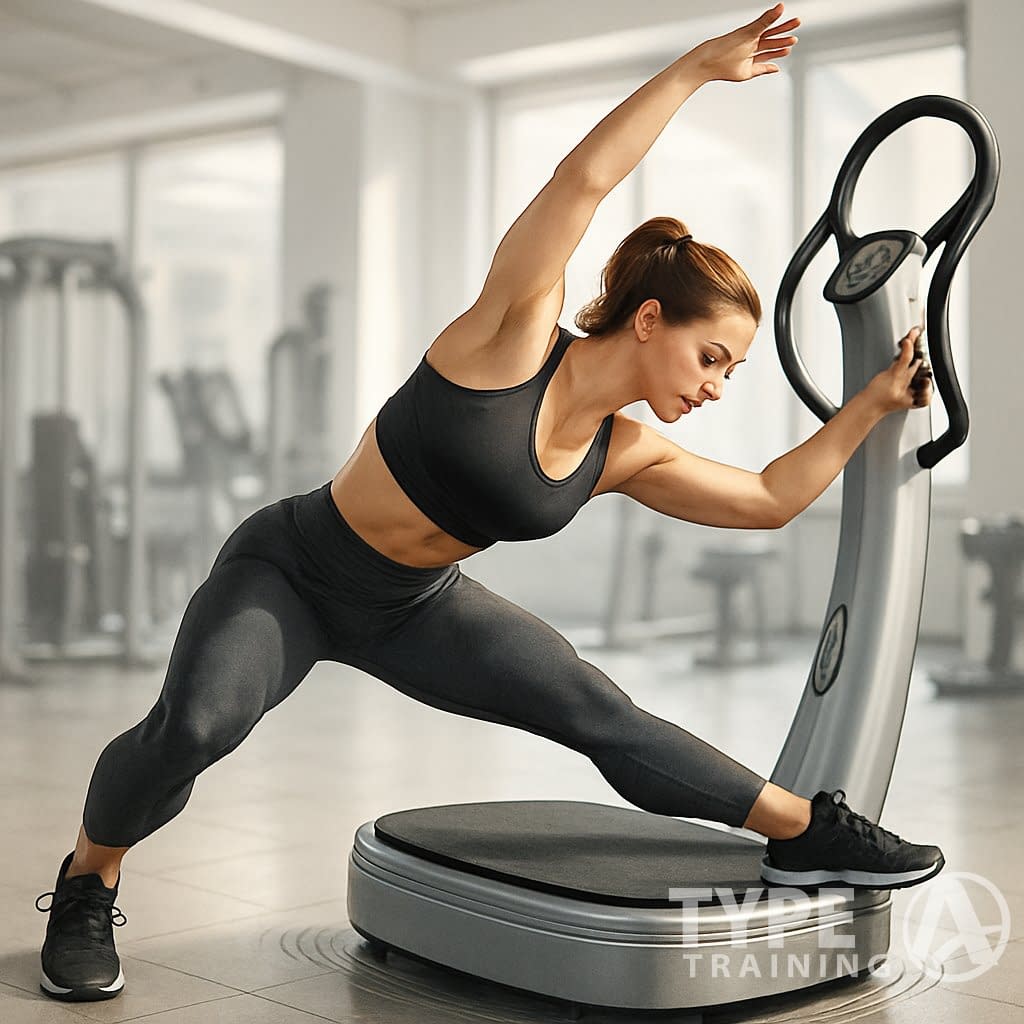
Popular posts:
You can try simple stretches on the Power Plate—think hamstring reaches, hip openers, or shoulder mobility work. The vibrations add an extra layer of muscle activation, which supports a better range of motion and healthier joints.
Power Plate Stretching is perfect for enhancing joint mobility.
Over time, this approach might make your daily movement feel smoother and more comfortable. It’s a surprisingly practical tool for recovery and reducing stiffness after workouts.
By improving circulation, it helps your body bounce back faster and lowers muscle soreness. People use it for fitness routines and everyday wellness alike.
Many people have reported improvements in their flexibility after regularly practicing Power Plate Stretching.
Key Takeaways
-
- Power Plate stretching uses vibration to enhance flexibility and mobility
- It can improve circulation, reduce stiffness, and support recovery
- Simple stretches on the plate fit easily into any fitness routine
Adding Power Plate Stretching to your routine can help integrate flexibility training seamlessly.
What Is Power Plate Stretching and Vibration Training?
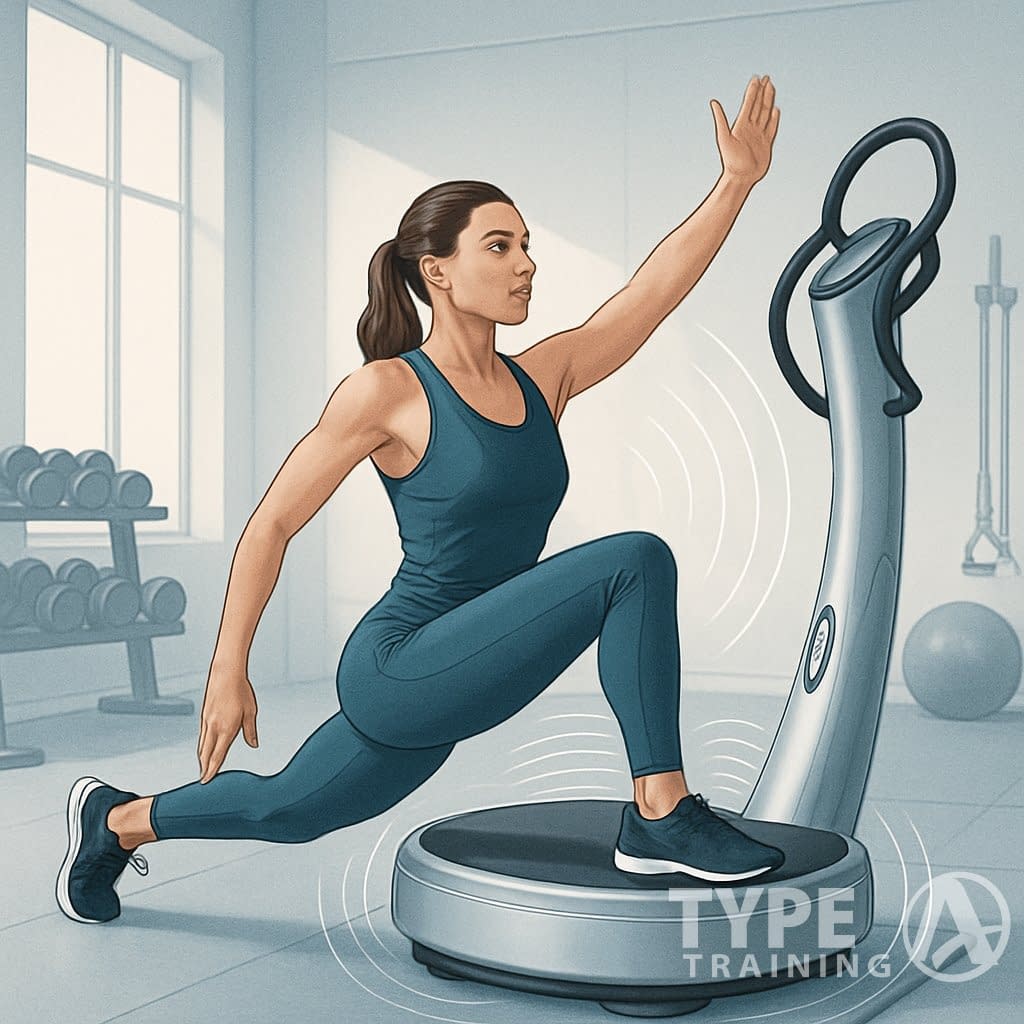
Power Plate Stretching uses a vibrating platform to boost flexibility, mobility, and circulation. The vibrations activate your muscles while you stretch, which can help you move more easily and recover better after exercise.
How Whole-Body Vibration Works
Whole-body vibration sends rapid oscillations through a platform you stand, sit, or place your hands on. These vibrations travel through your body and make your muscles contract and relax many times every second.
This repeated activation increases muscle engagement, even with simple movements. For stretching, it helps loosen up tight muscle fibers and ramps up blood flow.
Better circulation means more oxygen and nutrients reach your tissues, which helps with recovery and cuts down on stiffness. You can adjust vibration frequency and intensity to suit your fitness level.
Lower settings work well for stretching and mobility, while higher ones are better for strength or balance work. That flexibility makes vibration training useful for both beginners and seasoned gym-goers.
Power Plate Technology Explained
The Power Plate is a fitness device that delivers controlled whole-body vibration. Unlike some platforms that only move in one direction, the Power Plate vibrates up and down, side to side, and front to back.
This three-dimensional motion activates more muscle fibers at once. When you stretch on the Power Plate, the vibrations boost the stretch’s effect by increasing muscle activation and joint mobility.
Most models come with handlebars and straps for extra support and exercise variety. You can do static stretches, like sitting and reaching for your toes, or dynamic moves, like lunges, to hit different muscle groups.
The technology gives you consistent vibration patterns, helping you stay in control and safe while you use it. It’s a solid option for mobility training at home or in the gym.
Comparison to Traditional Stretching
Traditional stretching means holding a position to lengthen muscles and improve flexibility. It works, but it usually takes more time and patience to see results.
Stretching on a vibrating platform takes things up a notch. The vibrations help muscles relax more deeply and increase blood flow, which can make stretches feel more effective in less time.
For example:
| Method | Muscle Activation | Circulation Impact | Time Efficiency |
|---|---|---|---|
| Traditional Stretching | Low | Moderate | Longer sessions needed |
| Power Plate Stretching | High | Strong | Shorter sessions possible |
You don’t have to swap out traditional stretching for vibration training. Combining both can help you gain flexibility, improve mobility, and recover more efficiently.
Key Benefits for Flexibility and Mobility
Power Plate Stretching can be used effectively for both warm-up and cool-down exercises.
Using a Power Plate during stretching helps your muscles respond better by mixing vibration with movement. The vibrations boost circulation, muscle activation, and joint motion, making your stretches feel easier and more productive.
Enhanced Flexibility Through Vibration
Incorporating Power Plate Stretching can lead to improved muscle recovery post-workout.
When you stretch on a vibrating platform, your muscles contract and relax rapidly. This repeated action helps loosen tight fibers and cut down on stiffness.
Power Plate Stretching also aids in enhancing blood flow, benefiting overall health.
Improved blood flow plays a big role too. More circulation brings oxygen and nutrients to your muscles, which helps recovery and makes tissues more pliable.
You might find you can hold stretches longer with less discomfort. The vibration helps reduce muscle tension, so you can go further without feeling forced.
Key effects of vibration on flexibility:
- Greater muscle activation during stretching
- Improved circulation for softer, more elastic tissues
- Reduced tightness that can limit progress
Improved Joint Mobility
Mobility depends on how well your joints move through their natural range. Vibration training helps by firing up the small stabilizing muscles around each joint.
As you stretch on the Power Plate, these stabilizers contract quickly to keep you balanced. This reflexive action strengthens joint support and encourages smoother movement.
Many athletes incorporate Power Plate Stretching to improve their performance.
Better circulation near the joints helps cut down stiffness. More blood flow makes it easier to bend, rotate, and extend without discomfort.
If your hips, shoulders, or spine feel locked up, this extra stimulation can make daily movement less restrictive and more fluid.
Power Plate Stretching has shown to be beneficial for injury prevention.
Increased Range of Motion
Range of motion gets better when flexibility and joint mobility improve together. The Power Plate combines muscle activation with stretching, training your body to move beyond its usual limits safely.
When muscles contract and relax quickly under vibration, they start adapting to greater extension. This lets you reach deeper positions without strain.
With regular use, you might notice changes in things like squatting, bending, or reaching overhead. A wider range of motion helps posture, reduces stress on joints, and lowers injury risk during exercise or everyday tasks.
Practical benefits of greater range of motion:
- More efficient movement patterns
- Less joint stress during exercise
- Improved posture and alignment
Additional Health and Fitness Advantages
Vibration training for stretching does more than just improve flexibility. You also support stronger muscles, steadier movement, and healthier bones—all important for long-term performance and daily life.
Boosted Muscle Strength and Core Stability
When you stand, squat, or hold positions on a vibration plate, your muscles contract over and over, rapidly. This recruits more muscle fibers than just holding a static pose. Over time, you build muscle strength without having to add heavy weights.
Your core muscles—the abdominals, lower back, and hips—work harder to stabilize you during vibration. A stronger core means better posture and less strain on your spine during everyday stuff.
You can mix vibration with light weights or bodyweight moves too. For example:
- Plank holds on the plate engage deep core muscles.
- Squats on the plate fire up your legs and glutes.
- Lunges with vibration challenge both strength and balance.
These exercises boost both muscle endurance and core strength, which supports better movement in sports and daily life.
Better Balance and Coordination
The constant vibration keeps your body working to stay steady. Small stabilizing muscles in your ankles, knees, and hips have to adjust quickly, which is great if you want to improve coordination.
Better balance means a lower risk of falls, which matters as you age. For older adults and menopausal women, this can help preserve independence and confidence in movement.
You can work on balance with simple drills:
- Single-leg stands on the plate
- Step-ups with controlled movement
- Dynamic stretches that make you shift your weight
Adding these helps you react faster and move more efficiently. Improved coordination carries over to sports, dance, and daily activities where you need to change direction quickly.
Bone Density and Bone Health
Vibration training puts gentle stress on your bones, which can stimulate bone remodeling. This helps maintain bone mineral density and supports long-term bone health.
Some research suggests regular use may benefit people at risk for osteoporosis. That’s especially true for menopausal women, who tend to lose bone faster.
Stronger bones mean fewer fractures and better stability. Unlike high-impact workouts, vibration gives you this benefit with less stress on your joints.
Regular Power Plate Stretching can help maintain muscle elasticity and flexibility.
Key benefits for bone health include:
- Support for bone mineral density
- Reduced risk of osteoporosis-related fractures
- Safe strengthening option for those with joint concerns
Power Plate Stretching Techniques and Workouts
Combining Power Plate Stretching with other forms of exercise enhances overall fitness.
Using a Power Plate for stretching helps you loosen tight muscles and boost circulation. You’ll probably notice an improved range of motion, too.
Power Plate Stretching can maximize your workout efficiency.
The vibration technology can make traditional stretches and mobility drills more effective in less time. That’s a big win for anyone short on patience or time.
Effective Stretches for Flexibility
For flexibility, stick with simple stretches that hit large muscle groups. The vibration helps your muscles relax and lengthen more easily.
A classic option is the hamstring stretch. Sit on the plate with your legs extended, then reach toward your toes. The vibration boosts blood flow and lets you ease deeper into the stretch.
You can also try hip flexor stretches by kneeling with one knee on the plate and stepping the other foot forward into a lunge. Hold steady and keep your hips square.
For your upper body, place your hands on the plate and do a chest-opening stretch by leaning forward. This helps release tightness in your shoulders and chest, especially if you sit a lot or do lots of push-ups.
Implementing Power Plate Stretching into your regime can ensure a comprehensive approach to flexibility.
Mobility-Focused Movements
Mobility work on the Power Plate supports joint health and helps you move better in daily life. The idea is to move through controlled ranges of motion while the vibration wakes up those stabilizing muscles you might forget about.
Try starting with dynamic lunges. Put your front foot on the plate and step back with the other leg.
Move in and out of the lunge slowly. This opens your hips and knees without rushing things.
You can also work on deep squats by grabbing the plate handles for balance. The vibration nudges your ankles, knees, and hips to loosen up a bit more than usual.
For your spine, try a cat-cow movement with your hands on the plate. Round and arch your back gently—it feels good and helps mobility in your midsection.
These moves get you ready for planks, push-ups, and other core work. It’s a nice way to ease in.
Sample Power Plate Stretching Routine
You can mix flexibility and mobility drills for a quick routine. Shoot for 15–20 minutes, holding static stretches for 30–45 seconds and doing dynamic moves for 8–10 reps.
Consider incorporating Power Plate Stretching into your weekly routine for best results.
Example Routine:
- Hamstring stretch – seated on plate
- Hip flexor lunge – one knee on plate
- Chest stretch – hands on plate, lean forward
- Dynamic lunges – front foot on plate
- Supported deep squat – hold handles for balance
- Cat-cow movement – hands on plate
Optimizing Recovery and Reducing Pain
Vibration therapy with the Power Plate helps your body bounce back faster, manage aches, and support healing. The quick muscle contractions and extra blood flow work together to ease soreness, reduce inflammation, and help tissue repair.
Muscle Soreness and Recovery
After a tough workout, muscles often feel sore from tiny tears in the fibers. The Power Plate can speed up recovery by triggering rapid contractions that boost blood flow and bring nutrients to your muscles.
This might help muscles repair faster and cut down on how sore you feel. Try some light stretching or gentle moves on the platform to recover, without pushing your body too hard.
Lots of people notice that short Power Plate sessions after workouts help them get back to training sooner. By recovering better, you avoid long breaks and keep your routine going.
Tip: Stand or sit on the platform for 5–10 minutes after exercise to ease tension and support muscle repair. Simple, but surprisingly effective.
Pain Relief and Inflammation Reduction
Power Plate Stretching can also be effective for pain management during recovery.
Vibration therapy can help with pain by relaxing tight muscles and calming overactive nerves. The Power Plate’s vibrations nudge your body in a way that might ease discomfort, especially in stiff spots.
Inflammation tends to slow healing and add to pain. The gentle movement from the platform gets fluids moving in your tissues, which may help bring down swelling.
This comes in handy if you’re dealing with joint pain, muscle tightness, or minor injuries. Unlike high-impact workouts, the Power Plate gives you a low-stress way to get pain relief.
You can work it into a recovery plan to support healing without piling on extra pressure.
Improved Circulation for Healing
Good circulation matters for recovery—it brings oxygen and nutrients to muscles and clears out waste. The Power Plate gets your muscles to contract and relax quickly, which pumps blood throughout your body.
This boost in flow can help strained muscles heal and cut down on stiffness. It also keeps tissues flexible and full of oxygen.
After a session, you might notice warmer muscles and looser joints—classic signs of better circulation. With regular use, your body recovers more efficiently and stays in better shape overall.
Key benefit: Better circulation supports healing and helps prevent future soreness and stiffness. Not a bad trade-off for a few minutes of vibration.
Integrating Power Plate Stretching Into Your Fitness Lifestyle
Power Plate Stretching can be integrated easily into any fitness lifestyle.
Stretching on a Power Plate can boost flexibility, mobility, and recovery. It fits right into strength or cardio routines, too.
You might even find it helps you work out more efficiently, takes stress off your joints, and keeps you moving toward your fitness goals like better body composition or heart health.
Incorporate Power Plate Stretching for improved overall fitness and flexibility.
Safety Tips and Best Practices
Start with low-intensity vibration settings until your body gets used to it. This cuts down on unnecessary strain and keeps dizziness or muscle fatigue at bay.
Power Plate Stretching can be a great addition to your existing fitness program.
Always warm up before you step on the platform, even if it’s just for a couple of minutes. It’s worth it.
Keep good posture during each stretch. If you’re standing, keep your knees slightly bent—don’t lock them out.
For hamstring or calf stretches, lean on a wall or bar if you need extra balance. No shame in playing it safe.
Stick to short intervals, like 30–60 seconds per stretch. Overdoing it can lead to soreness or even mess with your recovery hormones.
If you have heart issues, joint problems, or you’re coming back from injury, talk to a health pro before adding vibration training. Listen to your body—seriously, it knows best.
Maximizing Workout Efficiency
Using Power Plate Stretching can enhance the effectiveness of your workout.
Try mixing Power Plate stretching with your strength or cardio sessions. For example, stretch on the plate between sets to keep muscles loose and ready.
Vibration tech might help you burn more calories in less time compared to just static stretching. Those constant contractions use up energy, which can help with fat loss and weight control.
Here’s a loose session structure:
| Activity | Duration | Intensity |
|---|---|---|
| Warm-up stretch | 2–3 min | Low |
| Main workout (strength/cardio) | 20–30 min | Moderate–High |
| Power Plate stretching | 5–10 min | Low–Moderate |
This setup lets you pair calorie burn with flexibility gains. It also helps you recover faster by cutting down on post-workout tightness.
Who Can Benefit From Power Plate Training
Power Plate stretching works for a lot of people, but your results depend on what you’re after. If you’re aiming for better flexibility, those vibrations help muscles loosen up and stretch out more easily.
Power Plate Stretching is suitable for individuals of all fitness levels.
Athletes might use it to push their range of motion. It can also help them dodge injuries, which is always a win.
If weight loss is your thing, you can mix stretching and Power Plate cardio. That combo tends to boost calorie burn and might support fat loss.
Older adults or anyone with limited mobility could find low-intensity vibration useful for joint health. It’s a gentle way to stretch without much impact on your body.
Even if you’re already training often, throwing in some Power Plate stretching can help with recovery. It might even take the edge off your cortisol after a tough workout.
Incorporating Power Plate Stretching into your lifestyle can yield long-term benefits.
